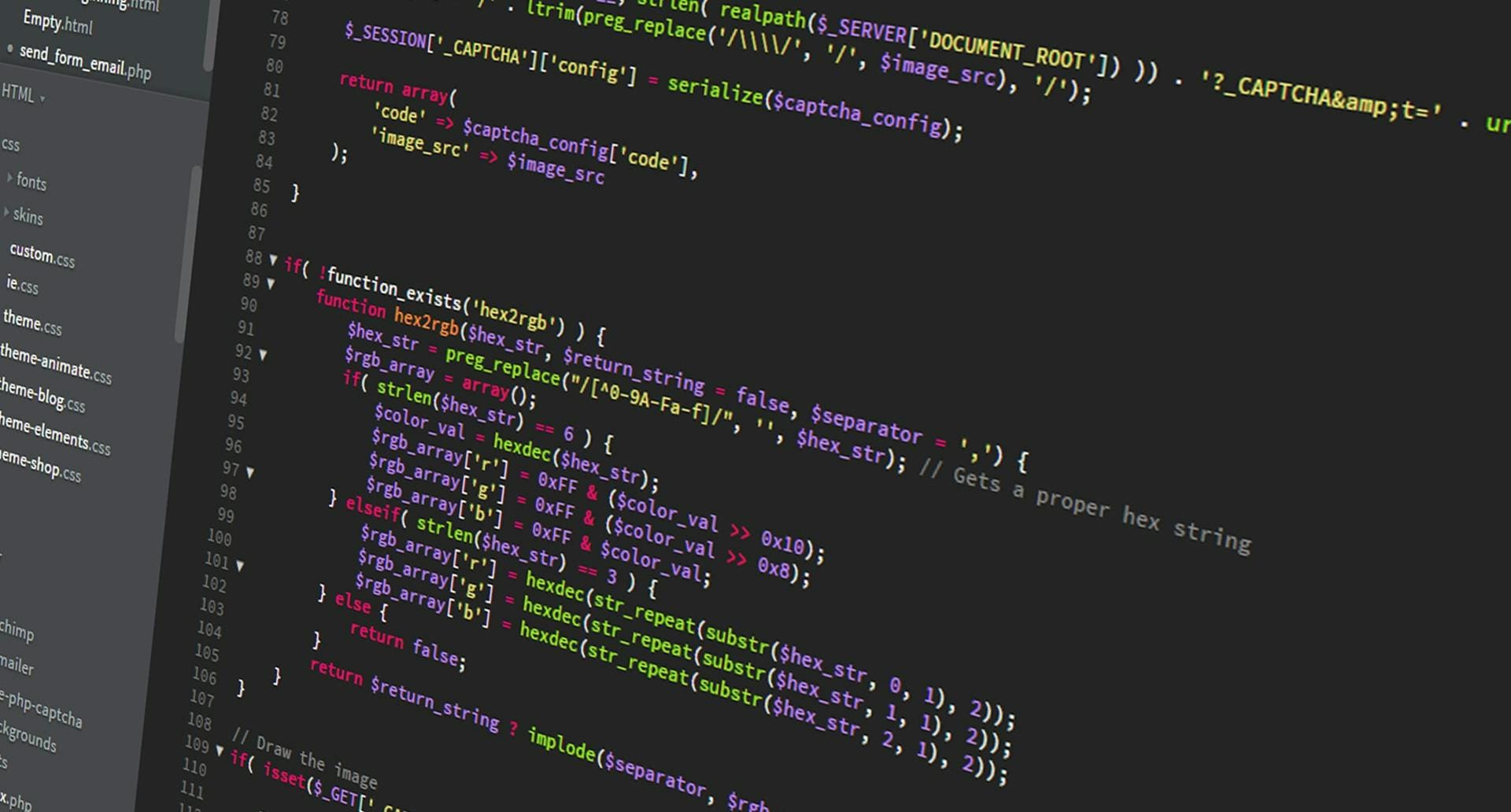Low Code vs. No Code: What’s The Difference?

When it comes to coding and software/app development, two trends are especially appealing to certain business users: low code and no code programming platforms.
Let’s take a look at the differences here.
What’s Low Code?
Low code is the term for developing custom software while minimizing any manual coding or programming. Effectively, low code abstracts the underlying coding process away from the primary person or user.
Low code tools rely on visual tools and graphical user interface that minimize the use of manual programming. The interface provides features on the user frontend that translate into programmatic actions typically using predesigned templates.
These templates — often involving drag and drop or point and click features — invoke a set of existing programming functions completely packaged to develop a feature end-to-end.
(Related reading: the software development lifecycle.)
How low-code works
From an end-user perspective, the coding effort is low — but technically not zero. The template design typically serves as a starting point and is limited to automating repetitive tasks. Other forms of low-code platforms include:
- API-based, invoking external service APIs.
- Component-based, invoking prebuilt functional programming modules
- Service-based platforms, invoking containerized microservices offering complete functionality on their own.
Visual programming is an important feature of low-code platforms, which is especially useful for team members with limited programming expertise.
The visual and coding workflow nevertheless requires programming expertise. These workflows are designed to address unique business requirements and may not be scalable for use cases involving custom configurations — this is where coding expertise is required to customize the low-code development environment.
What’s No Code?
A No-Code computing environment handles the end-to-end software development process as a visual programming framework. A graphical user interface (GUI) is used to invoke service APIs that handle a variety of programming tasks, including:
- Feature development at the frontend
- Database operations
- Configurations management
- Infrastructure management
- Data visualizations
- Cybersecurity
- Integrations
These services are fully functional, operating in an existing IT environment. A no-code programming interface invokes prebuilt integrations, custom backend services and third-party APIs without writing traditional code.
(Related reading: third-party risk management.)
Differences: low code vs. no code
The key difference between Low-Code and No-Code programming is the following:
Target users
No-code programming tools are suitable for professionals with little to no programming expertise. They may also require limited tooling functionality that can be satisfied by:
- Predefined templates
- Existing services
- Existing programming functions
Low-code is suitable for users with a variety of programming skills who may be looking for automated and graphical approaches to handle repetitive and predictable programming tasks. These users appreciate the flexibility to customize and configure the tooling with their own code but are generally looking for reliable and convenient automation of their programming workflows.
(Related reading: common programming languages.)
Customization & flexibility
No-code platforms are limited in flexibility. This is the case for visual programming platforms that must be capable of handling the programming workflows end-to-end for all backend services associated with a feature development.
- The platform conforms strictly to all tooling specifications and configurations of the integrated third-party services.
- Flexibility for customization depends on the variety of predefined templates available to the user.
Low-code platforms offer additional flexibility and customizations for advanced users, who may want to configure their programming workflows based on their own needs. Users can add custom logic, integrations and advanced features to the platform by manual coding.
Control & complexity
From an end-user perspective, the no-code platform is less complicated. The underlying codebase is hidden and abstracted from the user.
As a consequence, the user has less control on how a visual programming feature translates into execution code. This means that performance optimization issues and security flaws can persist even when the platform functions as expected from the frontend.
The low-code platform also abstracts a significant part of the codebase and infrastructure, but offers some control to the end-user.
Low-code platforms may allow power users to manage configurations, API workflows and infrastructure configurations — still, most of these are integrated and operate outside the scope of a low-code platform.
Speed of development
A no-code computing environment is built for speed. Performance optimization, strong security protocols and development constraints may not apply to use cases of No-Code platforms. These use cases typically include prototyping simple projects and scenarios where the functionality of the developed application is more important than its performance.
The visual programming platform and GUI capabilities accelerate the development cycle for these projects since no coding expertise are required.
Low code takes a similar approach, but is suitable for concrete tasks within the SDLC pipeline as well as developing a better functioning Minimum Viable Product (MVP). Business users and designers with limited programming expertise can work together with developers to understand how their proposed features are realized into a tangible software product.
Common challenges
Both the low-code and no-code platforms face common limitations and challenges. These platforms are highly customized for specific business cases — like iterating, experimenting, and working on MVPs. So, here’s what to consider on no- or low-code platforms:
- Higher cost, less flexibility. know that the product may be more expensive, less scalable, complex, and prone to performance issues.
- May require training. Depending on the user base, these tools may require a high learning curve, especially since no standardized model exists.
- Vendor lock-in & compatibility issues. Customers can easily run into vendor lock-in issues and inadequate compatibility with competing third-party services.
All of these challenges must outweigh the convenience and speed of a low-code or no-code development platform that is less powerful than traditional programming, expensive to operate and requires complex integration workflows with existing services in your IT environment.
See an error or have a suggestion? Please let us know by emailing splunkblogs@cisco.com.
This posting does not necessarily represent Splunk's position, strategies or opinion.
Related Articles
About Splunk
The world’s leading organizations rely on Splunk, a Cisco company, to continuously strengthen digital resilience with our unified security and observability platform, powered by industry-leading AI.
Our customers trust Splunk’s award-winning security and observability solutions to secure and improve the reliability of their complex digital environments, at any scale.


